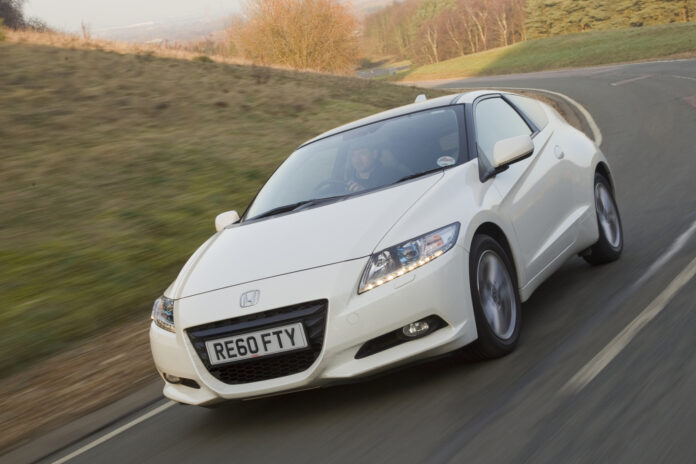It should have been a hit, and a big one. All the ingredients were there. The Honda CR-Z reprised a much-loved sports coupé of the 1980s, its high grade innards borrowed from one of the late 20th century’s most far-sighted conceptions and its chassis tuned by a Japanese gentleman well used to viewing his rapid progress via either one of his mount’s front door windows.
Yes, the Honda CR-Z was fine-tuned by Japanese drift king Keiichi Tsuchiya, its hybrid mechanicals owed much to the 1999 Honda Insight – the world’s first mass-produced hybrid – and, despite Honda’s denials, it was inspired by the dinky little coupés that were the first and second-edition Civic CR-X.
You could see that, not only in the sculpting of its diminutive silhouette, but also the near useless rear seat and its encasing within a fabric of different weave to that of the full-scale front chairs, mirroring a quirk of its lively ancestors.
They were livelier, in fact, than this 2010 homage-that was-not. The CR-Z’s battery pack, extra motor, control systems and safety kit added unwelcome heft to the dynamic mix of Honda’s ‘Compact Renaissance Zero’ coupé. Never mind that, though – what you also got was a speedy little wedge capable of travelling well over 40 miles on a gallon while simultaneously enabling its driver to cultivate virtual flowers and victory wreaths with it.
Honda not only provided the technology to go further, but electronic tutoring too. In throttle-dampening Eco mode, the Honda’s instrument pack changed from blue hues to green, a display of naked stems inviting cultivation via your right foot, moderate applications of the same festooning these stems first with leaves, and then with flowers.
Should your horticultural skills improve over your previous trip, you’d be accorded an electronic wreath, too. It was all a bit cartoonish, but Honda reckoned you could squeeze an extra 10% from a gallon if you obeyed the gearshift indicator and the econometer’s bar-graph admonishings.
Your ekings of unleaded would be aided by an electronic conservation programme called Scramble Assist. This was Honda’s intriguing phrase for the table of algorithms extracting the most from battery pack and twin motors when in Sport, Normal or Eco. Those algorithms could usefully have been extended, in fact, to allow you to more easily access the work of Tsuchiya-san, which was most easily uncovered when the Honda was unleashed on a track, its ESP interventions overruled.
But what about the drifting? There was little sign of this capability on ordinary roads, even if you pressed the Sport button, whose most dramatic immediate consequence was turning the instrument display to orange from blue. The throttle turned friskier of course, and the Integrated Motor Assist system delivered usefully more volt-generated torque, but only enough to score a less than CR-X-citing 9.1sec assault on 62mph, and rarely enough to reveal the secret side of this baby Honda’s handling.
